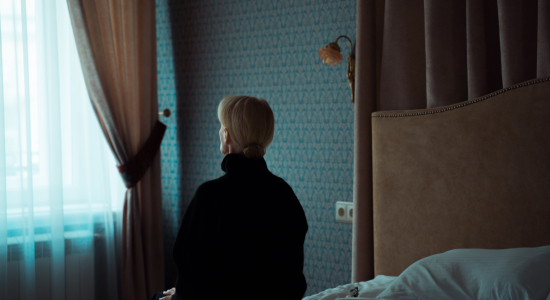How to Tell the Difference Between Postpartum Depression & the Baby Blues

Photo by cottonbro studio
Welcoming a new baby into the world is a joyous time filled with new experiences, but after a while, the excitement will wear off, and the overwhelming reality of your new life with a baby sets in. And this transition period is completely normal!
It’s not uncommon for new mothers to experience a range of emotions in the weeks and months following childbirth. From feeling tired, irritable, or weepy, this stage is commonly known as the "baby blues." However, for some women, these symptoms can progress into something more serious, such as postpartum depression.
It’s important to understand the differences between baby blues and postpartum depression so you can recognize the symptoms after your own pregnancy!
What are the Baby Blues?
The baby blues are a common experience for new mothers, occurring in up to 80% of all new mums. Symptoms typically start within a few days of giving birth and can last up to two weeks. Some common symptoms of the baby blues include:
- Feeling sad, weepy or moody
- Irritability or anxiety
- Difficulty sleeping or excessive sleepiness
- Lack of appetite
- Feeling overwhelmed
- Crying for no apparent reason
While these symptoms can feel distressing, it is important to understand that they are typically mild and resolve on their own within a few days or weeks. It’s perfectly normal for your body to experience extreme emotions after going through the strenuous times of pregnancy and childbirth!
What is Postpartum Depression?
Postpartum depression, on the other hand, is a more serious condition. It affects up to 1 in 7 women and can occur anytime within the first year after giving birth. Symptoms of postpartum depression can be similar to those of the baby blues, but they tend to be more severe and long-lasting. These can include:
- Persistent sadness or hopelessness
- Severe anxiety or panic attacks
- Feelings of guilt, worthlessness, or inadequacy
- Lack of interest in the baby or difficulty bonding with them
- Insomnia or excessive sleeping
- Appetite changes, either an increase or decrease
- Difficulty concentrating or making decisions
- Thoughts of harming oneself or the baby
If you are experiencing any of these symptoms for more than two weeks after giving birth, it may be time to seek help from loved ones or a healthcare professional.
How to Tell the Difference?
While it can be difficult to differentiate between the baby blues and postpartum depression, there are a few key differences to look out for:
1. Severity:
The baby blues are generally mild and short-lived, while postpartum depression symptoms are more severe and long-lasting.
2. Duration:
The baby blues typically last for a few days up to two weeks, whereas postpartum depression symptoms can last for months.
3. Onset:
The baby blues usually start within a few days of giving birth, while postpartum depression symptoms can occur at any time during the first year after giving birth.
4. Impact on daily life:
While the baby blues can be distressing, they usually do not significantly impact daily life. Postpartum depression, on the other hand, can interfere with your ability to care for yourself or your baby and may require professional intervention.
If you are unsure whether you are experiencing the baby blues or postpartum depression, it is important to speak with a healthcare professional. They can provide an accurate diagnosis and recommend appropriate treatment options, such as counseling, medication, or a combination of both.